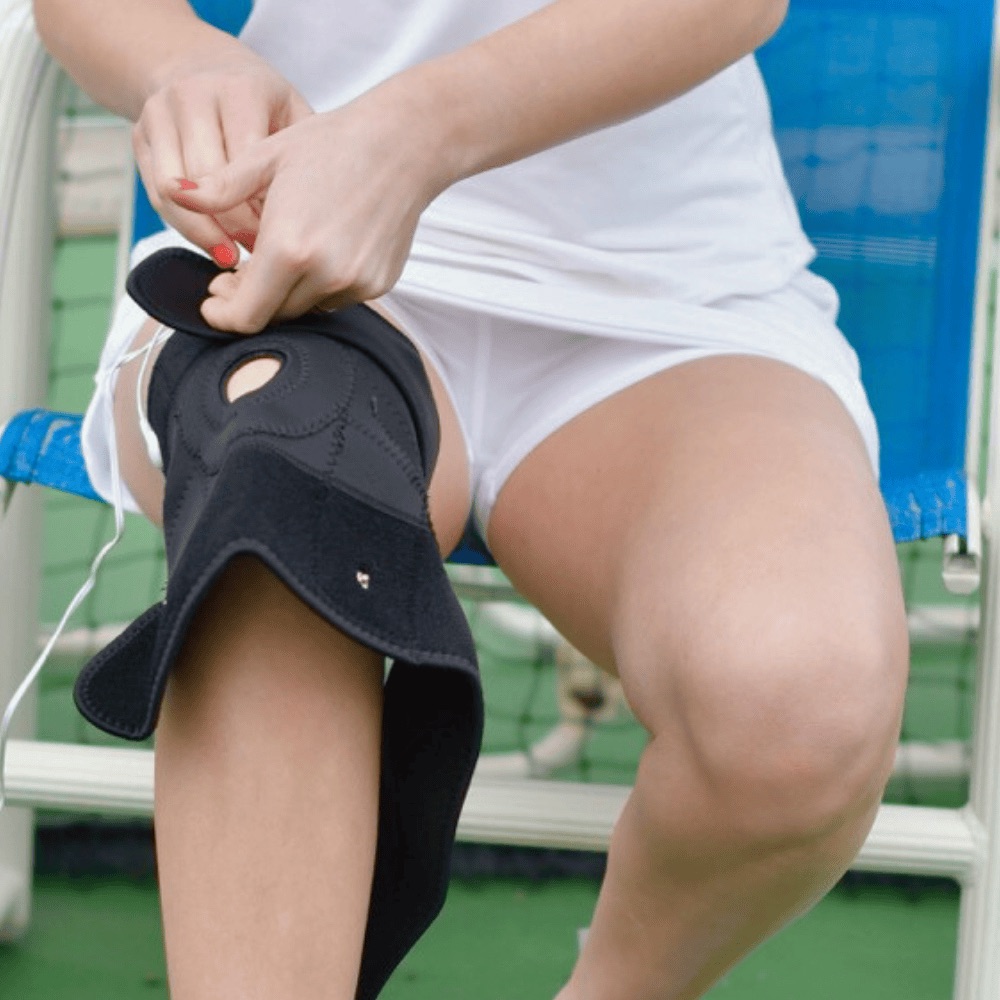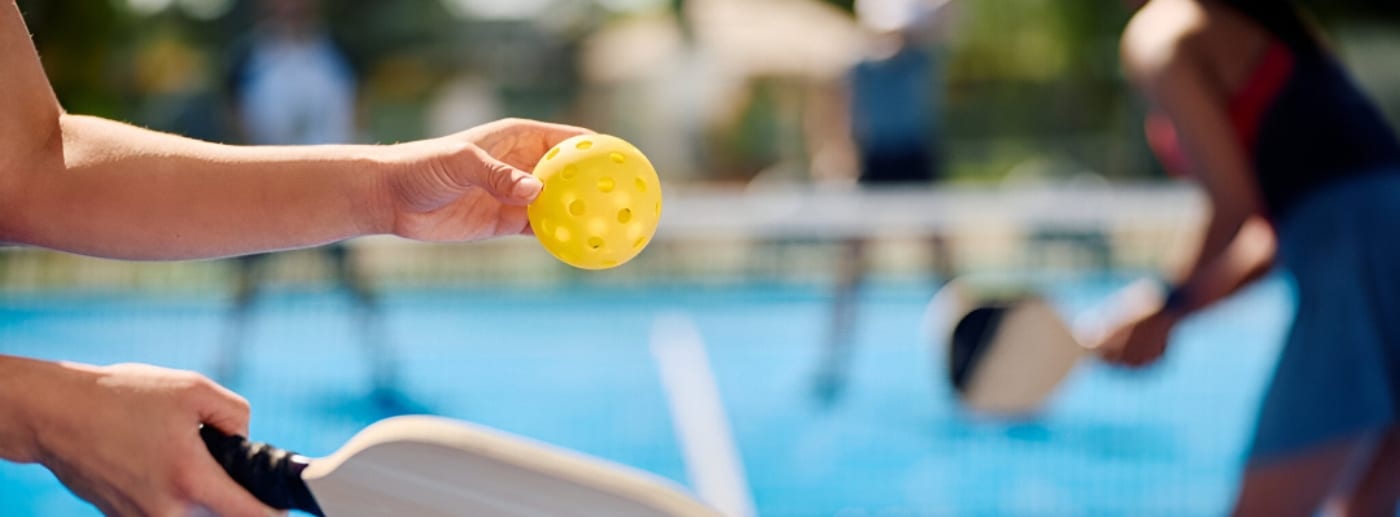For years, tennis was the stand-in for movement: endurance, coordination, and power all at once. Then came pickleball.
What started as a backyard hybrid turned into the fastest-growing sport in the country, and it’s easy to see why. The court is smaller, the paddles are lighter, and it doesn’t take marathon legs to play. It all feels charmingly manageable until your knees start requesting ice on the calendar.
Because where tennis tests stamina, pickleball tests recovery.
Shorter courts mean sharper reflexes, tighter pivots, quicker wrist rotations, and repeated torque through the knees and hips. The body never really coasts. Every rally is an interval, every point a micro-burst. For many players, especially adults rediscovering sport in midlife, the result isn’t exhaustion. It’s tension. A low-grade, lingering fatigue that lives in the joints long after the match ends.
Pickleball isn’t the easier version of anything. It’s its own athletic ecosystem with its own recovery code.
Small Court, Big Demands
If tennis is a marathon, pickleball is a series of sprints. The difference is scale.
A tennis player paces through broad arcs and long rallies. A pickleball player covers a fraction of that ground but changes direction five times as often. The workload shifts from lungs to joints, from endurance to reactivity. That creates what physical therapists call micro fatigue, a constant loop of contraction and release that taxes stabilizing muscles far more than most players expect.
The pace feels friendly until you sit down and realize standing back up requires strategy. The body’s support systems—knees, calves, shoulders, wrists—end up doing all the endurance work.
Recovery has to evolve to keep up.
Recovery Intelligence: Matching Modality to Motion
Every sport leaves behind its own pattern of fatigue. Endurance sports pull deep on muscle fibers; reflex-based sports drain the nervous system.
Electrical stimulation meets both.
HiDow’s TENS/EMS technology makes recovery adaptive. Long, steady pulses help decompress muscles after long rallies. Short, quick frequencies help release the micro-tension that builds from all those sudden stops. It’s recovery that mirrors how the body works, not just where it hurts.
That’s recovery intelligence, tech that understands motion, not minutes.
Why Midlife Athletes Need Pro-Level Recovery
Pickleball’s boom isn’t fueled by teenagers. It’s powered by adults who still play like competitors but recover like parents.
As the body ages, circulation slows and tissue repair takes longer. Muscles stay tight longer than they used to, and joints are a little less forgiving. The willpower is still there, the rebound time isn’t.
TENS/EMS therapy helps fill that gap. It stimulates muscle fibers to contract and release without added strain, boosts local blood flow, and eases inflammation in the process. What once required a clinic now fits in your gym bag. The same recovery principles professional athletes use finally meet the people actually playing every weekend.
In short, recovery tech caught up to the schedule of real life.
The Science of Reset: Why Tension Recovery Is the New Stretch
Stretching helps loosen muscle, but it doesn’t always reset the system behind it.
After fast-paced sports like pickleball, the real fatigue sits in the nervous system. The brain and body need to re-sync after constant bursts of movement. TENS/EMS helps restore that communication loop, reminding both systems that the match is over.
In that post-game window, the first 30 minutes after play, your body is still listening. Electrical stimulation helps it calm and recalibrate. That’s the difference between waking up sore and waking up ready to go again.
For serious players, that edge isn’t optional anymore.

Reprogramming Movement: How Recovery Shapes Performance
The more efficiently you recover, the better your body learns to move.
Each recovery session retrains coordination, teaching muscles to relax when they should and react when they need to. Over time, reaction times sharpen, balance steadies, and overuse injuries show up less often.
Recovery isn’t the cooldown anymore. It’s the continuation of performance.
Smarter Tools for the Way You Play
The right recovery setup depends on how you move.
Different paths, same purpose: helping your body recover with intention, so you can step back on the court with the same focus you started with.
Court Recovery Kit
Built for players who like control. Choose a wired or wireless TENS/EMS device, pair it with your go-to wrap—shoulder, knee, or elbow—and add large gel pads for deeper sessions. It’s a customizable setup designed to meet your body where the strain shows up.
Court Recovery Kit | $99
Micro Recovery Kit
For those who want a ready routine. This compact kit covers full recovery in one move—device, AcuSlippers, and accessories that help unwind tight muscles and bring circulation back online after play. Fully customizable setup.
Micro Recovery Kit | $99



Related Stories
Pickleball vs. Tennis: The Science of Recovery
For years, tennis was the stand-in for movement: endurance, coordination, and power all at once....
Oct
5 Ways to Support Bone Strength with HiDow
World Osteoporosis Day (October 20) October 20 is World Osteoporosis Day, and chances are, you’ve...
Oct
FDA-Cleared Is a Flex. Here’s Why.
Pulling Back the Curtain You’ve seen it on boxes, on websites, in ads: FDA-cleared. It...
Sep
This Is Fibro. This Is Larry.
September is Pain Awareness Month. And we’re not here to give you medical definitions or...
Sep
Train Your Relaxation Reflex
How often do you find yourself struggling to switch off after a long day? With...
Aug
Back To School Fitness: Balancing Academics & Athletics
Most student athletes don’t have a motivation problem. They show up. They train hard. They...
Aug